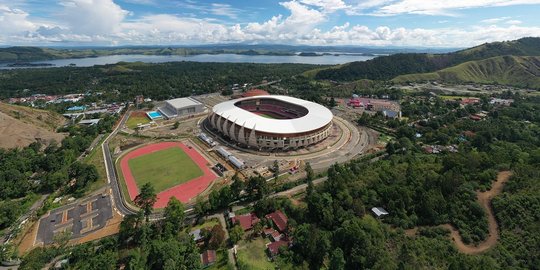Papua Infrastructure Development Acceleration Has Succeeded in Encouraging Economic Growth
By : Rebecca Marian )*
The government is accelerating infrastructure development in Papua. Development projects are carried out everywhere to remote areas. The main objective of accelerating development is to encourage economic growth. This project began to succeed because there was an increase in the financial sector for the people of Cendrawasih Earth.
Papua as the easternmost region in Indonesia has various potentials that can sell and increase the Regional Budget, such as tourism, agricultural products, and mining products. The wealth of natural resources on Cendrawasih Land is managed very well so that it can prosper the people. The central government also supports infrastructure development so that people’s mobility and projects run well.
Papua’s economic growth continues to increase. This is very good because it shows the success of the accelerated development program, to improve the economic sector in Cendrawasih Earth. There are no more gaps between Papua and other regions in Indonesia.
Papuan community leader Matthew Makuker stated that the acceleration of infrastructure development during the Jokowi era was considered successful in boosting regional economic growth. This is because the infrastructure built makes the community’s economy more vibrant. Adequate infrastructure can also reduce travel time, thereby speeding up logistics routes.
As for some of the infrastructure built in Papua, including the Trans Papua Road, airports, ports, Youtefa Bridge, the Sota Cross-border Post (PLBN) in Merauke Regency, and others.
In a sense, the government continues to build infrastructure in Papua for the prosperity of the people. Thanks to development by the current government, Papua already has good roads and infrastructure like in Java or other regions.
During the New Order era there was indeed centralization so that remote areas such as Papua (formerly known as Irian Jaya) were given little attention, and during the Reformation Order there was regional autonomy accompanied by an equal distribution of development. During President Jokowi’s time, infrastructure development was carried out massively so that there would be modernity throughout Indonesia.
President Jokowi has also made Presidential Instruction Number 09 of 2020 concerning the Acceleration of Welfare in Papua and West Papua, as a form of the government’s seriousness towards development in various sectors in the land of Papua.
One of the outcomes of Papua’s development is the Trans Papua Road which will soon be completed. if the trans Papua road is 100% completed, it can lower the price of goods in Papua. There will be a positive domino effect that occurs. When the road is smooth, trucks and pickup trucks can pass through it, so that deliveries to many areas in Papua no longer rely solely on airplanes. Shipping costs will decrease because the price of gasoline is lower than avtur, and the price of goods will also decrease.
Infrastructure development in Papua is indeed being encouraged by the government because it has many positive effects for the people of Cendrawasih Land. They can move faster and their business and affairs run smoother. Apart from that, other infrastructure such as the Youtefa Bridge is also beneficial for the tourism sector as it becomes a new object of tourism.
In addition, there was also a positive increase from the mining sector. The increase in economic growth from the mining sector is also the result of the government’s hard work in acquiring a majority stake in a copper mining company in Papua. So if there are mining materials such as copper and gold that are dredged, the proceeds automatically belong to the Indonesian government, and the majority is given to the regional government of Papua.
If the people are increasingly prosperous thanks to the mining products in Papua, then there is no longer the term ‘like a dead chicken in a rice barn’ because they can enjoy the mining products. Not in the form of precious metals but in the form of development, the capital of which comes from the distribution of mining products to the regional governments of Papua and West Papua.
Economic and political observer Margo Yuwono stated that growth also occurred thanks to infrastructure development established by the government. In a sense, infrastructure development also affects economic growth because if there are roads, bridges and other facilities, people’s mobility will be faster.
If mobility is faster thanks to good roads (for example the Trans Papua road) it will save money because people choose to send goods and travel by road. They are slowly leaving transportation via airplanes which costs much more. The longer the Trans Papua road, the more people will benefit because shipping costs are lower so that the price of goods can be lowered.
Infrastructure development took place thanks to the special autonomy fund (otsus) which was given regularly starting in 2001. The government has always increased the nominal special autonomy fund to trillions of rupiah, and this program has been extended for a second period since 2021. Special autonomy has proven to prosper the people of Papua.
Papuan civilians themselves are satisfied because their economic growth has increased and the facilities and infrastructure provided by the government have improved. The Papua region is no longer synonymous with areas that only consist of virgin forests, but is well-organized and very modern.
The acceleration of infrastructure development in Papua has been very successful in driving economic growth. With development, it is optimistic that life there will be better and the people will prosper. The government is serious about building infrastructure so that there is an even distribution of development in Indonesia.
)* The author is a Papuan student living in Jakarta
